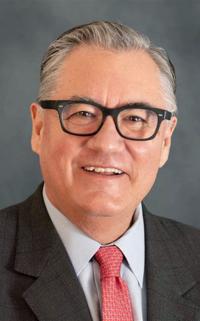The University of ├█Ķųų▒▓źŌĆÖs program to bridge gaps in research funding caused by federal pauses or cancellations is a six-month project with no budget cap in which all eligible applicants are receiving money, an official said.
ŌĆ£Everybody that has asked for bridge funding (and) conforms to the requirements of the solicitation that we put out, has received and is in the process of receiving bridge funding,ŌĆØ UA Senior Vice President Tom├Īs D├Łaz de la Rubia told the ├█Ķųų▒▓ź in an interview Wednesday. ŌĆ£Nobody has been turned down that had a proposal that was consistent with the solicitation.ŌĆØ
UA spokesperson Mitch Zak said Thursday the bridge funding program has received 12 requests so far, out of which seven have been funded and five are under consideration.
The solicitation or evaluation criteria for research proposals were contained in an announcement sent by D├Łaz de la Rubia on March 6 to the university community. The bridge fundingŌĆÖs purposes were listed as: bridging the gap between an expired or soon-to-expire grant and an expected new grant award; bridging gaps created by federal funding agencies; and focusing on preserving Ph.D. student support for the semester.
People are also reading…
That announcement said evaluations of the applications, to happen monthly, are based on: dean recommendations; impact of the funds on preserving Ph.D. studentsŌĆÖ roles; likelihood of securing future funding; applicantŌĆÖs track record of extramural funding; and clear evidence the funding gap is due to delays or disruptions in funding.

D├Łaz de la Rubia
At the time of the March launch, Zak and D├Łaz de la Rubia declined to comment on how much money was being invested in the bridge funding or how long the funds were expected to last to support UA research. The UA is dealing with a budget deficit of $65 million this fiscal year that it plans to eliminate by July 1.
D├Łaz de la Rubia said Wednesday there is no budget or limit to the bridge funds since ŌĆ£thereŌĆÖs too much uncertainty in all the budgets right now.ŌĆØ
ŌĆ£It depends on who needs the resources, how many students are affected,ŌĆØ he said, adding it was impossible to put any limits since the funding landscape is constantly changing and evolving.
He said in six months, towards the end of the summer, UA administrators will evaluate and see where the program stands.
The UAŌĆÖs original announcement of bridge funding came a few days after faculty senators blasted D├Łaz de la Rubia and the UA administration at a March 3 Faculty Senate meeting for not having such a plan in place ŌĆö while some other universities including Yale did ŌĆö to deal with the impacts of the Trump administrationŌĆÖs orders to cut federal funding.
The bridge funds are for research projects paused, stopped or in limbo because of federal orders and delays, D├Łaz de la Rubia said Wednesday.
ŌĆ£We have students that need to continue doing their work, right? We donŌĆÖt want to lose our graduate students,ŌĆØ he said. ŌĆ£I mean, they work really hard, and theyŌĆÖre the future. So, we want to make sure, as much as we can, that we are able to protect those graduate students.ŌĆØ
The Trump administration has ordered numerous changes, delays and cuts to federal funding at universities.
So far, federal agencies under Trump have terminated UA research projects, including four foreign aid projects under the now-gutted U.S. Agency for International Development; and eight humanities projects cancelled by the National Endowment for Humanities.
Also, the National Institutes of Health is trying to cap its overhead or indirect cost rates at 15%, which would bring it down from 54.5% at the UA and potentially lead to a loss of $40.5 million for UA. That effort is being challenged in court.
D├Łaz de la Rubia said his understanding is that some project work funded by the NIH, the National Science Foundation, the departments of Energy and Defense, and the National Aeronautics and Space Administration, has been slowed or received stop work orders. But he also said a lot of projects that received stop orders have been reinstated.
ŌĆ£Understandably thereŌĆÖs a lot of anxiety, because thereŌĆÖs so much uncertainty. I mean, I completely understand it,ŌĆØ he said, speaking of the impacts on faculty and researchers. ŌĆ£Research is the lifeblood of many, many, many faculty members ŌĆö itŌĆÖs their passion, teaching and research. ŌĆ” And we live in a different environment right now. Uncertainty creates anxiety, itŌĆÖs understandable. I donŌĆÖt expect that people are not going to feel that anxiety.ŌĆØ
When asked if he was feeling the same anxiety, D├Łaz de la Rubia said, ŌĆ£of course, yeah.ŌĆØ
ŌĆ£I care about the research that we do, because it has an impact on society,ŌĆØ he said. ŌĆ£And then we think (about) things that impact our communities, that impact our Native American communities, that impact Southern ├█Ķųų▒▓ź, water, all kinds of things, right? So, I care deeply about that, and so, of course, I have anxiety.ŌĆØ
Reporter Prerana Sannappanavar covers higher education for the ├█Ķųų▒▓ź and . Contact her at psannappa1@tucson.com or DM her on .












